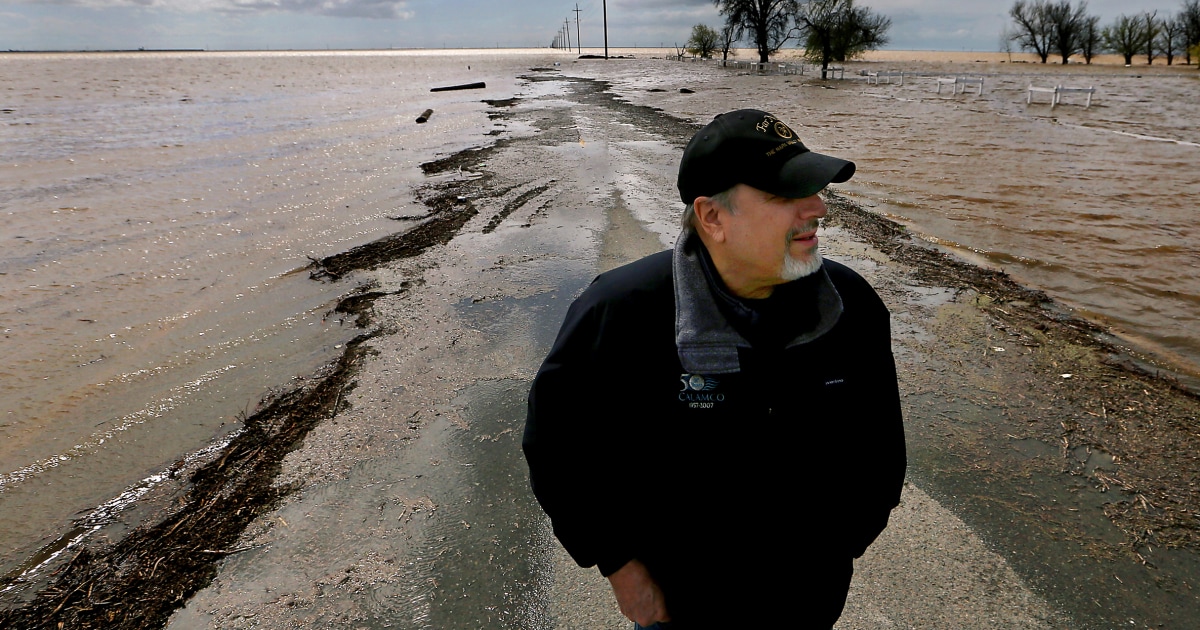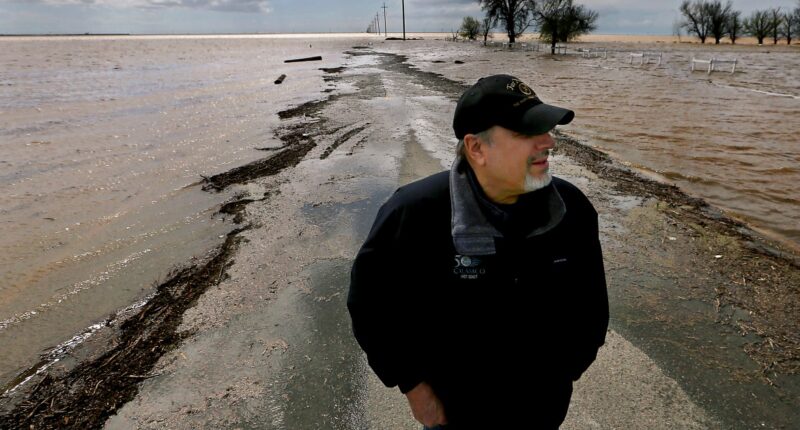
Several rivers — Kings, Tule, Kern and Kaweah — historically dead-ended at the lake and replenished its water levels every spring, but farmers have diverted and rerouted so much water that the lake bed is now usually dry. It’s among the most fertile farmland in the country.
Today, the irrigation system is designed to “use every single drop of water” that flows into the basin, Mount said.
In fact, through aggressive groundwater pumping, farmers collectively use more water than what would flow to the lake every year. Pumping has caused the land to sink dramatically — it has subsided in parts of the San Joaquin Valley by as much as 28 feet, according to the U.S. Geological Survey — deepening the bowl.
This season, far more water is flowing than can be used.
For about two weeks, farmers and emergency workers have been scrambling to plug levees and prevent the worst as the ground became saturated and rivers swelled after a seemingly endless series of atmospheric river storms battered California.
The flooding has breached dozens of levees, forced rescues, swamped construction sites at California’s high-speed rail project and seeped into several communities, including Allensworth, a historic community that in 1908 was the first settlement west of the Mississippi to be founded and governed by Black Americans.
“What you’re seeing now more than anything else is traditional flood problems,” Mount said. “All of that water is making its way into the bottom of the bowl and starting to fill the bowl.”
What could come next is more unusual — and worrisome.
The Sierra Nevada mountains, above the Tulare Basin, are storing two to three times as much water as snowpack as is normal. If the snow melts quickly, it will send floodwater churning toward the lake bottom.
Tulare Lake refilled in 1997 and 1983 during very wet seasons. The snowpack is larger this year.
“If we use 1983 as an example: They had more than 80,000 acres of land underwater. If it’s bigger than that, it could be as much as 100,000 acres underwater,” Mount said.
Tulare County ranked second in the country for agricultural market value, according to the 2017 Census of Agriculture. The region produces almonds, oranges, pistachios, wine grapes, milk and cheese.
“This has a ripple effect on the nation’s food supply,” Mount said.
Source: | This article originally belongs to Nbcnews.com









